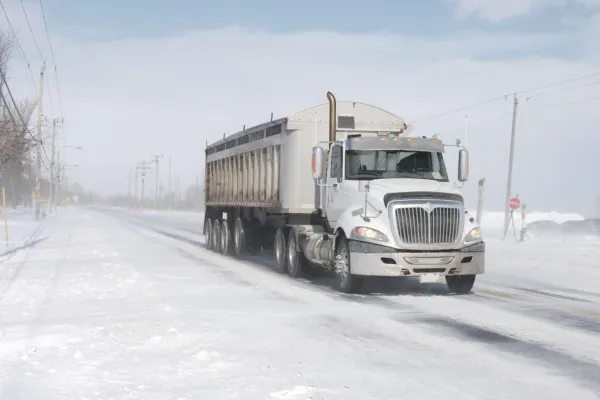The Principles of Defensive Driving
Key Defensive Driving Tips for Truck Drivers

Maintain a Safe Following Distance
One of the fundamental aspects of defensive driving is maintaining a safe following distance. Trucks require more braking distance than smaller vehicles, so it’s essential to leave ample space between your truck and the vehicle ahead. This buffer zone provides time to react to sudden stops or emergencies.
Judging a safe following distance depends on factors like speed, weather, and traffic conditions. In inclement weather, such as rain or snow, increase the distance even further to account for reduced traction and visibility. In heavy traffic, stay vigilant and ready to adjust your following distance as needed to maintain safety.
Always Be Aware of Your Surroundings
Awareness of your surroundings is crucial for defensive driving. Regularly scanning mirrors and being mindful of blind spots helps you keep track of nearby vehicles, pedestrians, and road conditions. This awareness allows you to anticipate potential hazards and take defensive maneuvers when necessary. Monitoring the road ahead and behind ensures that you’re prepared for sudden changes in traffic patterns. Being proactive in observing your surroundings reduces the risk of being caught off guard by unexpected situations.Adjust Speed to Conditions
Adapting your speed to match road, weather, and traffic conditions is fundamental for safety. Adverse weather conditions can drastically affect visibility and traction, making it essential to reduce speed accordingly. For instance, rain can create slippery roads, while fog can obscure your view of the road ahead. Avoid the temptation to speed or prioritize delivery deadlines over safety. Consistently driving at a safe speed reduces the risk of accidents and ensures that you arrive at your destination safely.Use Proper Signaling and Communication
Clear communication on the road is vital. Using turn signals well in advance of lane changes or exits helps other drivers anticipate your actions. Proper signaling reduces confusion and minimizes the risk of collisions.
In addition to turn signals, use your horn if necessary to alert other drivers of potential dangers. When facing hazards, activate your hazard lights to warn others and prevent accidents.
Avoid Distractions
Distracted driving is a significant risk factor for accidents. Activities like texting, eating, or adjusting navigation systems divert attention from the road. Staying focused on driving tasks is essential for safety. Minimize distractions by keeping your truck organized and ensuring that items are within reach. Use hands-free devices only, when necessary, never use a handheld device while operating your truck, and dedicate time for breaks to address non-driving tasks.Handling Road Rage and Aggressive Drivers
Road rage and aggressive drivers pose threats to safety. Recognizing signs of aggressive driving, such as tailgating or erratic lane changes, helps you take defensive actions to avoid confrontations. Stay calm and avoid engaging with aggressive drivers. Maintain a safe distance, slow down if necessary, and avoid eye contact. Prioritize your safety by not allowing their behavior to escalate into a dangerous situation.Dealing with Fatigue and Staying Alert
Fatigue impairs reaction times and decision-making, making it a significant concern for truckers. Combat drowsiness by taking regular breaks, ensuring proper sleep, and staying hydrated. Recognize early signs of fatigue, such as yawning or difficulty focusing, and pull over if needed. To stay alert during long drives, listen to music or engage in conversations. These activities can help maintain focus and prevent drowsiness.Proper Maintenance of Your Truck for Safety
Regular maintenance is essential for preventing breakdowns and ensuring roadworthiness. Key safety checks include tires, brakes, lights, mirrors, and fluid levels. Conduct pre-trip and post-trip inspections to identify potential issues and address them before hitting the road. A well-maintained truck reduces the risk of mechanical failures and enhances safety during your journeys.Defensive Driving During Poor Weather Conditions

Rain
Rain reduces visibility and traction, making it crucial to adjust driving habits. Reduce speed and increase following distances to account for wet conditions. Use windshield wipers and defoggers to maintain clear views.Snow and Ice
Snow and ice require special techniques for safe driving. Slow down and avoid sudden movements to prevent skidding. If conditions worsen, consider stopping until roads improve.Fog
Fog presents challenges due to reduced visibility. Use low-beam headlights and road markers to guide your path. Avoid sudden maneuvers and maintain a safe speed to prevent collisions.Looking for safe and reliable Expedited Freight Services?
Give Straight Shot Express a call today at (920) 722-0956.

